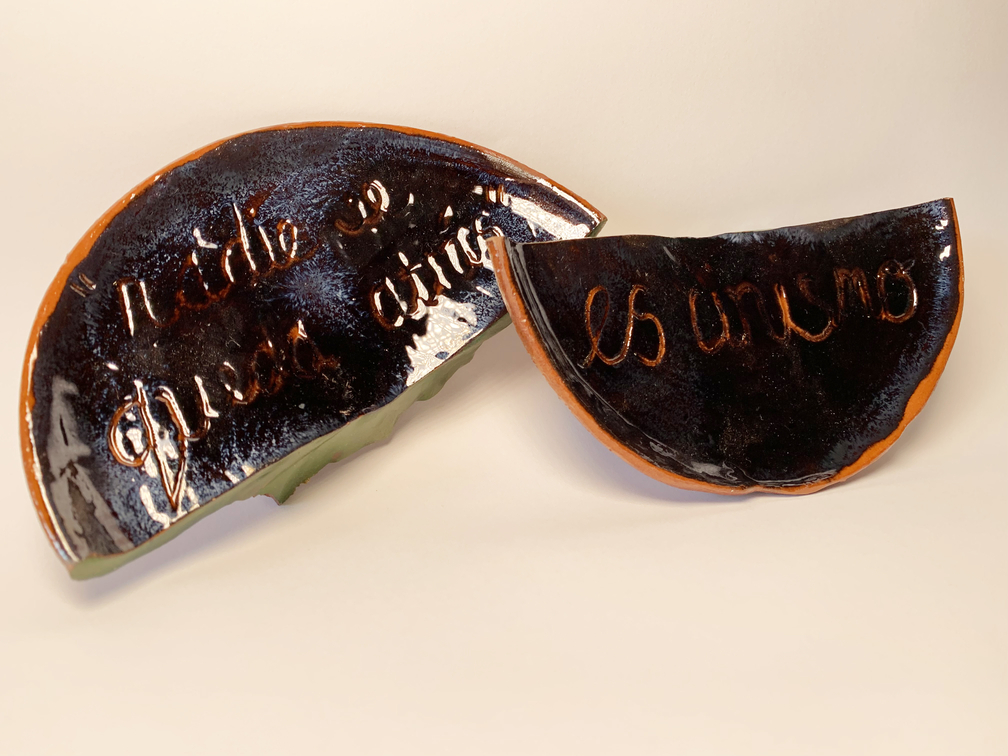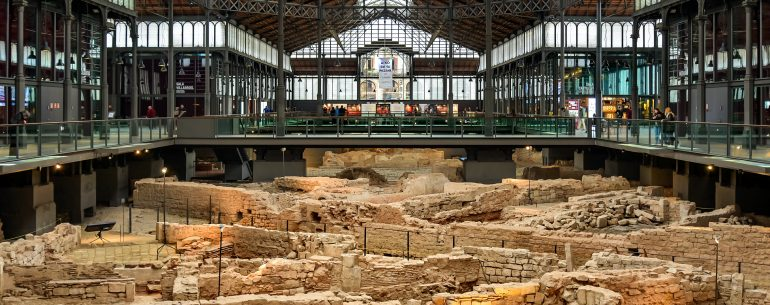Monument to Networks of Mutual Aid /
Monumento a Redes de Apoyo Mutuo

Monument to networks of mutual aid: memories of the pandemic was a sound and ceramics installation that shared fragments of interviews with collaborators, centering the experience and memories of antiracist collectives and associations based in Barcelona who were implicated in the distribution of food, the production of masks and other tasks of support associated with care work during the early days of the pandemic. The audio included readings of poems, slogans and spiritual texts chosen by the collaborators and read in Romanian, Arabic, Spanish and Catalan.



The installation was a two-channel audio that sounded around directional speakers arranged in a circle. Placed in the middle were a series of ceramic pieces –pots, plates, cups– fabricated already broken down the middle. Over the break a word was inscribed: a poem, slogan or spiritual text shared by the collaborators during the interviews.

The project gestured towards a collective narrative of the recent public health crisis. The process was carried out between September–November 2020, with the collaboration of artist Violeta Ospina and the participation of Aurel Bunda and Antonia, from La Parroquia ortodoxa rumana Sant Jordi; Samuel Céspedes, Carina Ramírez Castro and Nicky Susana Justavino Cedeño, from Sindillar Sindihogar; Linaxa, Wenda Trejo and Baro Aboubacar Landry, from Barcelona Antiracist Network of Care; Aly Saad, from the Centro Cultural Islámico Catalán; Aminah Akram and Hafsah Imaan Shabbir, from Minhaj-ul-Quran (Foro Minhaj Diálogo); and presented as part of "Dissentir la historia" (Dissent from History) sessions at El Born Centre de Cultura i Memoria (El Born CCM).



Just in front of the installation site lies another exhibition of broken ceramic objects: the Born CCM is an archaeological site with a permanent exhibition of materials spanning the Roman period up to the 18th century. The ceramic material in the permanent display are mostly kitchen and storage vessels: plates, earthenware bowls, pans, lids, pitchers, jugs, clay pots, casserole dishes, oil dispensers, jars and mortars. Apart from the gleam of cobalt-blue of the Barcelona blue ceramics period of the 15th century, most of the pieces are dulled by time.



The bright, broken ceramics in Monument was intended to signal rupture, a crisis in social reproduction that the “Dissenting History” sessions considered in relation to questions of historical memory and struggles over citizenship and belonging in the city of Barcelona in the present.
